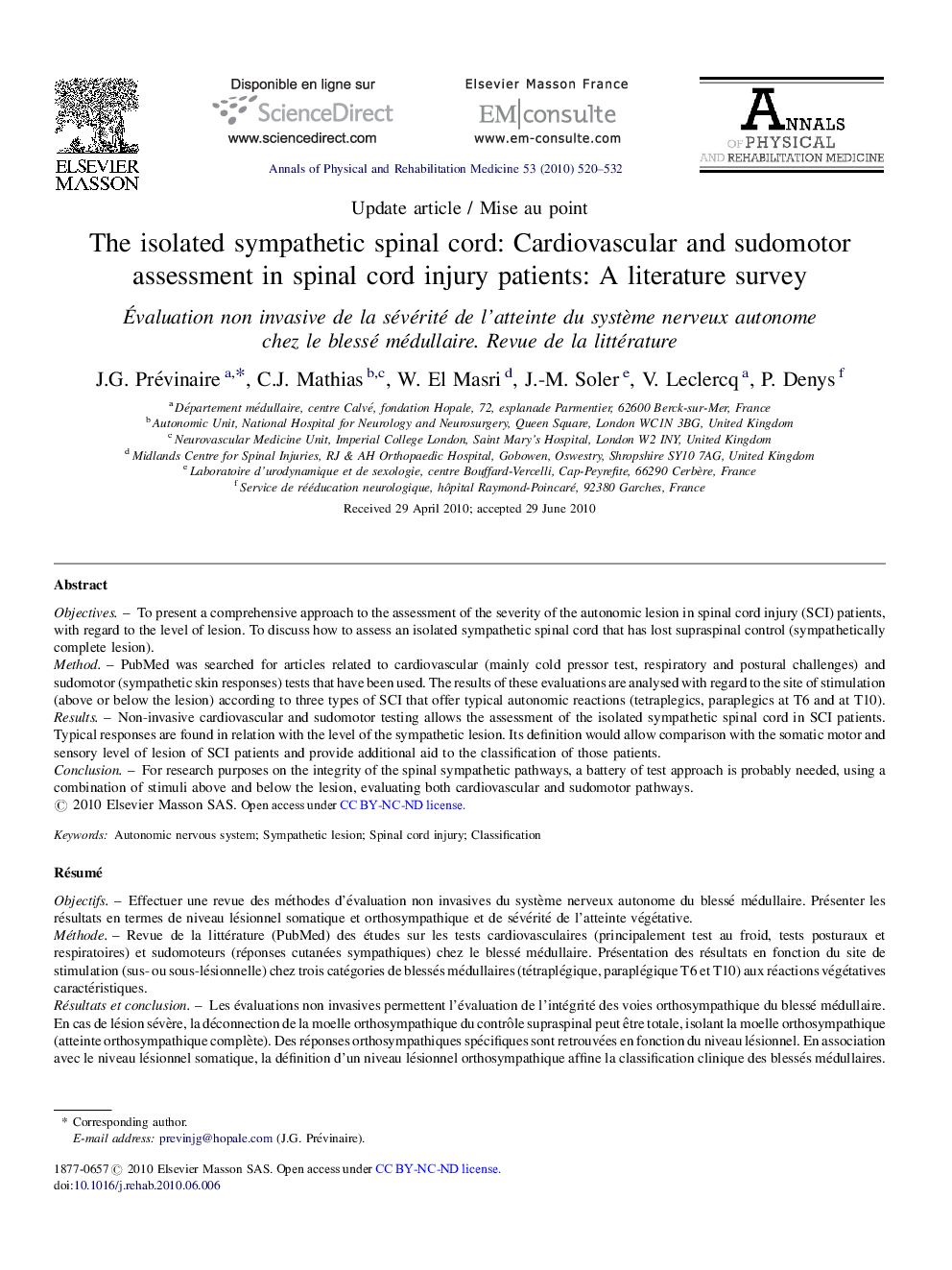| کد مقاله | کد نشریه | سال انتشار | مقاله انگلیسی | نسخه تمام متن |
|---|---|---|---|---|
| 6204382 | 1603344 | 2010 | 13 صفحه PDF | دانلود رایگان |

ObjectivesTo present a comprehensive approach to the assessment of the severity of the autonomic lesion in spinal cord injury (SCI) patients, with regard to the level of lesion. To discuss how to assess an isolated sympathetic spinal cord that has lost supraspinal control (sympathetically complete lesion).MethodPubMed was searched for articles related to cardiovascular (mainly cold pressor test, respiratory and postural challenges) and sudomotor (sympathetic skin responses) tests that have been used. The results of these evaluations are analysed with regard to the site of stimulation (above or below the lesion) according to three types of SCI that offer typical autonomic reactions (tetraplegics, paraplegics at T6 and at T10).ResultsNon-invasive cardiovascular and sudomotor testing allows the assessment of the isolated sympathetic spinal cord in SCI patients. Typical responses are found in relation with the level of the sympathetic lesion. Its definition would allow comparison with the somatic motor and sensory level of lesion of SCI patients and provide additional aid to the classification of those patients.ConclusionFor research purposes on the integrity of the spinal sympathetic pathways, a battery of test approach is probably needed, using a combination of stimuli above and below the lesion, evaluating both cardiovascular and sudomotor pathways.
RésuméObjectifsEffectuer une revue des méthodes d'évaluation non invasives du système nerveux autonome du blessé médullaire. Présenter les résultats en termes de niveau lésionnel somatique et orthosympathique et de sévérité de l'atteinte végétative.MéthodeRevue de la littérature (PubMed) des études sur les tests cardiovasculaires (principalement test au froid, tests posturaux et respiratoires) et sudomoteurs (réponses cutanées sympathiques) chez le blessé médullaire. Présentation des résultats en fonction du site de stimulation (sus- ou sous-lésionnelle) chez trois catégories de blessés médullaires (tétraplégique, paraplégique T6 et T10) aux réactions végétatives caractéristiques.Résultats et conclusionLes évaluations non invasives permettent l'évaluation de l'intégrité des voies orthosympathique du blessé médullaire. En cas de lésion sévère, la déconnection de la moelle orthosympathique du contrôle supraspinal peut être totale, isolant la moelle orthosympathique (atteinte orthosympathique complète). Des réponses orthosympathiques spécifiques sont retrouvées en fonction du niveau lésionnel. En association avec le niveau lésionnel somatique, la définition d'un niveau lésionnel orthosympathique affine la classification clinique des blessés médullaires. L'utilisation d'une batterie de tests associant stimulations sus- et sous-lésionnelles et évaluant les voies cholinergiques et adrénergiques est souhaitable si l'on veut explorer l'intégrité du système nerveux orthosympathique.
Journal: Annals of Physical and Rehabilitation Medicine - Volume 53, Issue 8, October 2010, Pages 520-532